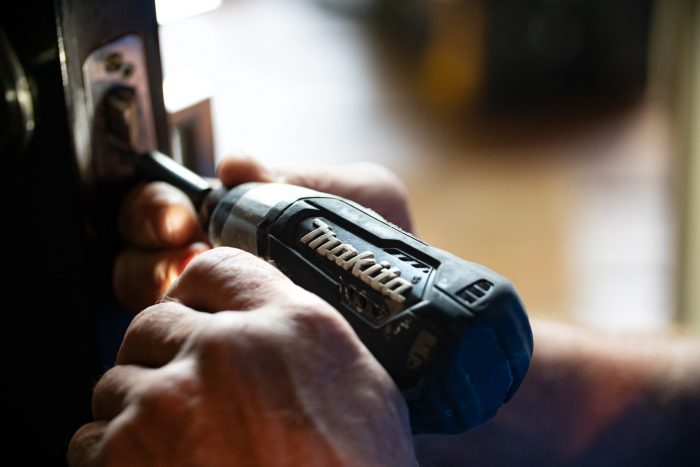Embarking on the homeownership journey is an exciting experience, but it comes with a responsibility that some new homeowners might find daunting: home maintenance. But it doesn’t have to be a strenuous task. With some basic tips and a proactive approach, you can keep your home in great shape, ensuring it remains a comfortable safe haven for years to come.

Understanding Home Maintenance
Firstly, it’s crucial to understand what home maintenance entails. It involves a series of activities carried out to ensure your home’s systems and appliances work efficiently, and your living space remains safe and pleasant. These activities range from routine cleaning to the inspection of electrical systems, and each plays a vital role in preventing minor issues from turning into expensive repairs.
Creating a Maintenance Schedule
One of the simplest ways to stay on top of your home maintenance tasks is by creating a schedule. This doesn’t need to be complex; it’s merely a way to structure your tasks so that they’re manageable and not forgotten. Incorporate monthly, seasonal, and annual tasks into a calendar or a home maintenance app. Staying organised is half the battle, and a well-structured plan can save you time and stress in the long run.
Routine Maintenance Tips
When considering interior maintenance, several tasks should form part of your regular routine. It’s important to check your smoke detectors and carbon monoxide alarms frequently to ensure they are functioning correctly, as these devices are essential for your household’s safety. Additionally, keeping an eye on your heating and cooling systems, such as by changing filters and seeking professional check-ups, can prevent larger issues down the line. Be vigilant for leaks in areas like your bathroom and kitchen, and don’t delay in addressing these problems, as water damage can significantly impact your home’s structure and aesthetics.
On the exterior, don’t overlook your gutters. Regular cleaning can prevent water damage, while an occasional roof inspection can help catch potential issues early. Similarly, a quick, routine check around your property’s foundation and a semi-regular inspection of the house’s façade, including windows and doors, can prevent issues related to dampness, insulation, and security.
Seasonal Tasks
Different seasons require different maintenance tasks. In the spring, focus on recovering your home from winter’s impact, paying attention to your garden or landscaping, and conducting a thorough external property clean-up. Summer preparations typically involve readying your home for warmer temperatures, ensuring your air conditioning units are functioning and your home is well-insulated. Autumn is the time to prepare for the coming cold, including ensuring your heating systems are ready to go, and attending to your property to make certain it’s prepped for winter conditions. During winter, internal home care is paramount, with particular attention paid to preventing damage from freezing temperatures.
Financial Planning

Understanding that maintenance does have associated costs is important. Setting a budget that takes into account routine maintenance and allows for unexpected repairs is a practical step every homeowner should undertake. It’s also beneficial to establish a savings fund dedicated to home repairs and improvements, providing a financial cushion. Recognise when you can handle tasks yourself and when it’s wiser to call in a professional. This discernment not only can save money but also prevents inadvertently compounding problems.
Dealing with Unexpected Situations
Emergencies can and do happen. Preparedness for situations like power outages, leaks, or appliance breakdowns can mitigate panic and reduce disruption. Establish a straightforward plan for such instances, including having savings set aside specifically for emergencies and insurance that covers significant damages. Prioritise your household’s safety by ensuring everyone knows what to do and where to go in case of a more serious scenario, such as a fire.
Long-term Upkeep and Enhancements
Lastly, maintain a vision for the future. Regular maintenance is part of a broader strategy to not only keep your home functioning and safe but also to increase its value over time. Plan for long-term improvements and keep records of all the maintenance work done, as this information can be incredibly valuable for warranty purposes or even future sale processes.
Engage a Handyman vs. DIY Home Maintenance
Deciding between a do-it-yourself approach or hiring a professional handyman, such as the professional handyman team from Handyman Singapore, is a pivotal choice for new homeowners. Each approach has its benefits; DIY projects offer a sense of achievement and cost savings, perfect for simple tasks like changing light bulbs or minor gardening. However, for more intricate work, particularly tasks involving carpentry services, electrical adjustments, or deep plumbing, professionals’ expertise becomes essential.
Professional handyman services are crucial in cities where quality work and time-saving conveniences are highly valued. These experts don’t just bring the necessary skills and tools; they also identify potential issues, offer advice, and ensure work is done accurately, providing guarantees that lend homeowners peace of mind. By engaging professionals for complex tasks, you not only mitigate risks but also free up time for other priorities. Recognising one’s own limitations and opting for a professional’s touch for more demanding jobs creates a balanced, effective home maintenance strategy.
Essential Tools for Home Maintenance

For novice homeowners, assembling a basic toolkit is a step that can profoundly simplify the home maintenance process. Ready availability of certain essential tools, like a hammer, various screwdrivers, wrenches, and a tape measure, lays the groundwork for handling minor repairs and understanding the mechanics of one’s living space. Notably, a cordless screwdriver stands out as a convenient device, offering ease of use and mobility, ideal for quick fixes and hard-to-reach areas.
In addition to these basics, including a sturdy pair of pliers and a level is advisable for tasks requiring precision, like hanging frames or installing shelves. For more ambitious DIY endeavours, having a reliable drill is beneficial. Prioritising safety is equally important; investing in protective gear, such as eyewear and gloves, along with a basic first aid kit, is crucial for handling any mishaps that may occur during repairs. Furthermore, keeping a torch handy proves practical for power outages or poorly lit workspaces.
This toolkit, while basic, serves as a robust foundation for routine home maintenance, promoting both self-reliance and practical understanding of your home. Remember, the focus should be on acquiring quality tools; they’re more durable and provide better functionality, enriching your maintenance efforts as you gradually gain more expertise and confidence in handling various household tasks.
In conclusion, a proactive stance on home maintenance brings invaluable peace of mind. By setting a routine, budgeting wisely, and preparing for the unexpected, you make your living space safer and more enjoyable. Remember, the goal isn’t just to maintain but to continually enhance your home, making it a source of pride and comfort. Regular upkeep is the key to hassle-free homeownership.











